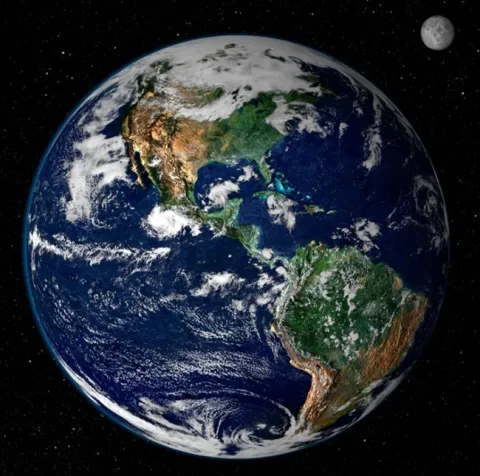
Earth, our home, is the third planet from the Sun and the only known celestial body to support life. From an astronomical point of view, Earth holds a unique place in the solar system due to its diverse ecosystems, abundant water resources, and a stable climate, which together create a haven for life. This article delves into Earth's astronomical characteristics, its place within the solar system, and its significance in the broader context of the universe.
Earth’s Position in the Solar System
Earth is the third planet from the Sun, orbiting at an average distance of approximately 93 million miles (150 million kilometers), a distance known as 1 Astronomical Unit (AU). This position places Earth within the Sun's habitable zone, often referred to as the "Goldilocks Zone," where temperatures are just right for liquid water to exist—a crucial factor for life as we know it.
Earth's Physical Characteristics
- Diameter and Mass: Earth has an equatorial diameter of about 7,917 miles (12,742 kilometers) and a mass of approximately 5.97 x 10^24 kilograms. It is the largest of the terrestrial planets (Mercury, Venus, Earth, and Mars) in terms of both diameter and mass.
- Shape: Earth is not a perfect sphere but an oblate spheroid, meaning it is slightly flattened at the poles and bulging at the equator. This shape is a result of its rotation.
- Composition: Earth is composed of layers, with a core made of iron and nickel, surrounded by a mantle of silicate rock, and an outer crust of lighter silicates. The crust supports the oceans and continents, which host diverse ecosystems.
Earth's Orbit and Rotation
- Orbit: Earth orbits the Sun in an elliptical path, completing one revolution in approximately 365.25 days, which defines the length of a year. This elliptical orbit causes slight variations in distance from the Sun throughout the year, contributing to seasonal changes.
- Rotation: Earth rotates on its axis, an imaginary line passing through the North and South Poles, once every 24 hours. This rotation results in the day-night cycle. The axis is tilted at an angle of 23.5 degrees relative to its orbital plane, a tilt that is responsible for the changing seasons as Earth orbits the Sun.
Earth’s Atmosphere
Earth's atmosphere is a complex mixture of gases, primarily nitrogen (78%) and oxygen (21%), with traces of argon, carbon dioxide, and other gases. The atmosphere plays a critical role in sustaining life by regulating temperature through the greenhouse effect, shielding the planet from harmful solar radiation, and enabling the water cycle. The presence of oxygen is particularly significant for the survival of aerobic organisms.
The Moon: Earth's Natural Satellite
Earth has one natural satellite, the Moon, which is the fifth-largest moon in the solar system. The Moon orbits Earth at an average distance of about 238,855 miles (384,400 kilometers) and has a profound influence on our planet. It stabilizes Earth's axial tilt, contributing to a relatively stable climate over geological timescales. The gravitational interaction between Earth and the Moon causes tides, which have been crucial in the evolution of coastal ecosystems.
Earth's Magnetosphere
Earth is surrounded by a magnetic field generated by the motion of molten iron in its outer core. This magnetosphere extends into space and protects the planet from solar wind and cosmic radiation, which could otherwise strip away the atmosphere and expose the surface to harmful particles. The interaction between the solar wind and Earth's magnetosphere also leads to phenomena like the auroras, visible near the polar regions.
Earth in the Context of the Solar System
In the broader context of the solar system, Earth stands out as a planet with a delicate balance of conditions that support life. It is neither too close nor too far from the Sun, avoiding the extremes of heat and cold experienced by planets like Venus and Mars. The presence of liquid water, a stable atmosphere, and a dynamic geology all contribute to Earth’s unique status.
Earth's Significance in the Universe
While Earth is currently the only known planet to support life, the study of exoplanets—planets orbiting other stars—has revealed that there may be many Earth-like worlds in our galaxy alone. These discoveries fuel the search for extraterrestrial life and deepen our understanding of Earth's place in the universe.
Conclusion
From an astronomical point of view, Earth is a remarkable planet. Its position in the solar system, physical characteristics, protective atmosphere, and magnetic field make it a unique and habitable world. As our knowledge of the cosmos expands, Earth remains a focal point for understanding the conditions necessary for life and the potential for discovering life beyond our planet.
